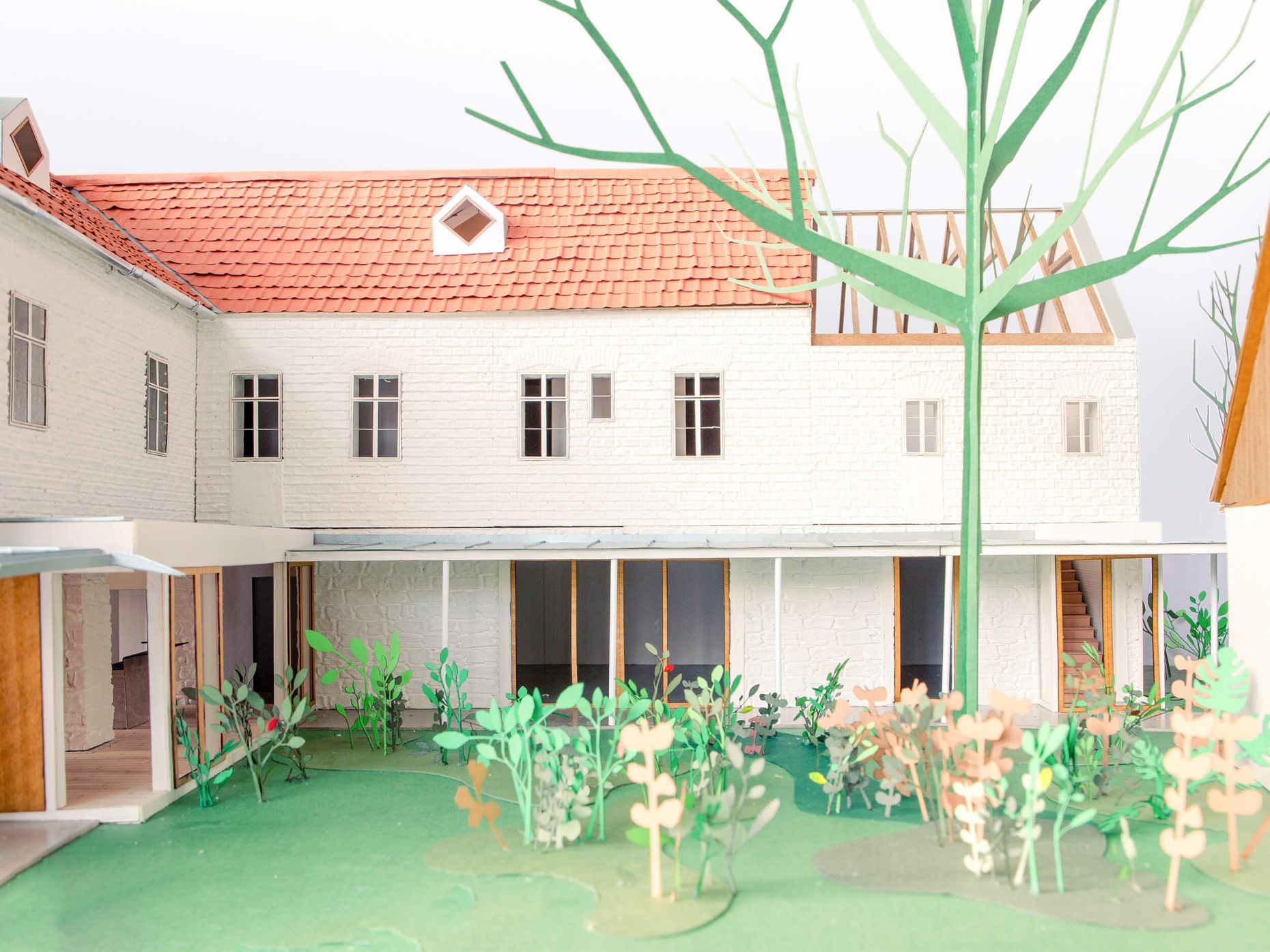Designing Synergies. Spatial and Energetic Transformation Scenarios for Small Towns and Municipalities Using the Example of the Wagram Region (Lower Austria).
Short Description
Starting point / Motivation
A key response to meet the current climate targets is a drastic reduction in energy consumption in the building and construction sectors. The most relevant measures are thermal building refurbishment, re-utilising existing buildings and parts of buildings, and switching to sustainable energy systems. In practice, however, these measures are often treated independently, meaning the potential for synergetic solutions is lost.
The basic idea of the project is to develop a suitable interdisciplinary method and concrete solutions that consider the activation of disused buildings and the formation of small-scale energy networks together to generate productive synergies and positive effects on social sustainability (synergy clusters).
The focus of the proposed study lies in small towns and municipalities. Here, the surging installation of individual energy systems (PV systems and air heat pumps) is problematic in terms of inefficient use of resources and from a townscape perspective. At the same time, the number of vacant buildings is increasing, due to the ongoing migration to urban centres.
Content and Goals
The proposed project aims to develop solutions that address this specific condition in a rural context but can also be transferred to larger cities and more complex situations. Specifically, the study will deal with the Wagram region in Lower Austria, analysing a selection of four municipalities.
As part of the cross-parcel perspective, the usability of public spaces for the generation of renewable energy is also being investigated. This approach makes it possible to activate and improve public space and thus incorporate the potential for social innovation as an integral part of the transformation process. An additional aspect of the work is to encourage the local population to participate in integrative climate measures by means of an exhibition.
From an overall perspective, the project integrates the principles of the New European Bauhaus. The main innovation of the proposal is to address the reactivation of disused buildings and the establishment of decentralised networks producing renewable energy to develop integrated multi-site communal solutions.
Specifically, technologies such as geothermal probes for heat generation and storage, possibly also in public sites, a strategic approach to the positioning of PV systems or micro-windmills, as well as site-specific interventions such as the repurposing of underground cellars for air cooling, etc., will be examined in more detail.
Furthermore, the method of the so-called transformation scenario, in which spatial, technical and social practices are synergistically combined, represents a novel approach to revitalising the built environment.
Methods
The proposed method of an architectural design study, based on a fieldwork-approach in combination with interdisciplinary expert knowledge and the active involvement of local stakeholders, is also an innovative aspect of the project.
Expected Results
The specific outcome of the project is the formulation of a pilot project for a Synergy-Cluster. In addition, the study will test the transformation scenario method for its practical applicability in exploratory projects on a larger scale.
Finally, as part of disseminating the project, a public exhibition and website will present Synergy-Cluster prototypes to the general public to sensitise them towards the transformative benefits of urban renewal in rural towns.
Project Partners
Project management
TU Wien, Institute of Architectural Design, Research Unit Design and Construction 1
Project or cooperation partners
- TU Wien, Institut für Raumplanung, Forschungsbereich Regionalplanung und Regionalentwicklung
- TU Wien, Institute of Building Physics and Building Ecology
- TU Wien, Future.Lab
- forschen planen bauen Thomas Romm ZT
- wohnbund:consult eG Büro für Stadt.Raum.Entwicklung
- Marktgemeinde Großweikersdorf
- Marktgemeinde Kirchberg am Wagram
- Marktgemeinde Absdorf
- Gemeinde Großreidenthal
- Klima- und Energiemodellregion Wagram
- NÖ Dorf- & Stadterneuerung
- NÖ Energie- und Umweltagentur GmbH
Contact Address
TU Wien
Lorenzo De Chiffre
Institut 253-4
Karlsplatz 13
A-1040 Vienna
Tel.: +43 (664) 605 882 718
E-mail: dechiffre@h1arch.tuwien.ac.at
Web: www.h1arch.tuwien.ac.at

